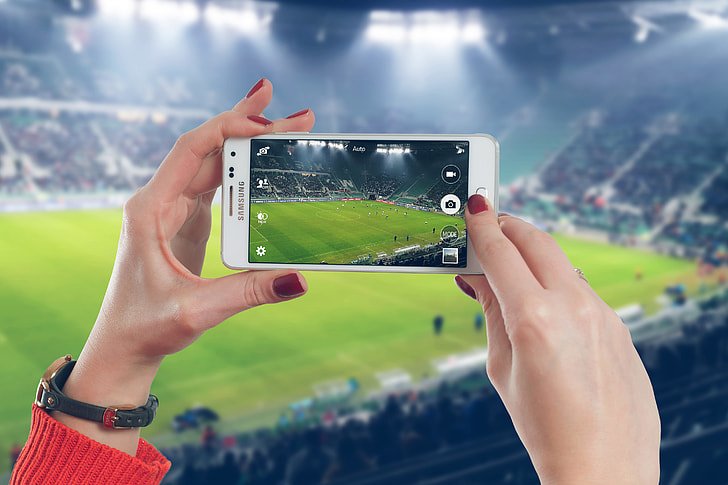
In a world where mobile apps have reshaped how we learn and train, E‑Coach Pro is making waves in the football space. Designed to bring structured, professional-level training to players of all ages, it’s more than just a drill library. Behind the scenes, the app runs on a tight combination of video infrastructure, user-centered UX, and performance-focused design—all working together to deliver a seamless training experience.
Unlike gimmicky workout apps that offer static content, E‑Coach Pro – soccer training app stands out by offering a blend of coaching structure, interactive guidance, and progress feedback—all optimized for mobile. Here’s a closer look at the tech stack (and thinking) that makes it tick.
Delivering Pro-Level Coaching Through Mobile Video
At the core of E‑Coach Pro’s functionality is video coaching—the ability for users to watch, replicate, and master football drills from anywhere. But mobile video isn’t plug-and-play. To work effectively across devices and networks, the app relies on a few critical optimizations:
1. Adaptive Streaming
To ensure video loads fast and plays smoothly—even in lower-bandwidth environments—the app likely uses adaptive bitrate streaming. This technique adjusts video quality on the fly based on a user’s internet speed, ensuring players in rural areas or using mobile data still get a smooth experience.
2. Mobile-First Layout
The UI/UX is intentionally designed for one-handed navigation. Big buttons, intuitive drill categories, and embedded playback controls make it easy to pause, rewind, and review instructions while in motion—on the field or at home.
3. Drill Segmentation
Each drill is broken into bite-sized clips, avoiding long-form video fatigue. This format isn’t just UX-friendly—it also reduces load time and server strain by delivering smaller video chunks rather than full streams.
Structured Progression Without Complex AI
While E‑Coach Pro doesn’t use AI-driven personalization, it offers a tiered progression model that mimics how a coach would guide a player.
1. Manual Skill Paths
Users can follow training paths designed around skill level—from beginner to advanced. These paths are manually curated, ensuring a logical build-up of complexity (e.g., footwork basics before agility drills or shooting techniques).
2. User Input + Session Logging
After completing a session, users can log activity. The app uses this self-reported input to suggest the next logical drill or module. While it’s not algorithmic AI, it delivers a sense of direction and progression, especially useful for younger players.
3. Gamified Structure
Progress markers—like session streaks, badges, or completed levels—add gamification without overcomplicating the interface. This not only encourages consistency but also provides a lightweight form of tracking without requiring real-time biometric data or AI models.
Performance Optimization: Why It Feels Fast (and Doesn’t Crash)
Smooth performance isn’t accidental. Footballers expect their training tools to keep up with their pace—not lag or glitch mid-session. E‑Coach Pro handles this by prioritizing front-end speed and back-end reliability.
1. Local Caching for Offline Use
To support training in environments with limited connectivity, the app likely uses local caching. Once a session is loaded, video files and data are temporarily stored on the user’s device, minimizing interruptions.
2. Lean Front-End Architecture
The app’s lightweight UI reduces RAM usage, helping older Android and iOS devices run drills without lag. This is especially critical for users who may not own the latest smartphones but still want full functionality.
3. Stable Backend and CDN Usage
With video delivery depending on speed, E‑Coach Pro almost certainly uses a content delivery network (CDN) to serve content from regional servers—ensuring faster load times and reduced buffering, especially for international users.
UX That Matches the Training Mindset
Training apps aren’t just about features—they need to align with a user’s state of mind. E‑Coach Pro’s design reflects this understanding.
1. Minimal Taps to Action
Every step—from launching a session to logging a workout—is achieved in just a few taps. No menus to dig through. No ads, distractions, or unnecessary overlays.
2. Field-Ready Design
With larger fonts, high-contrast UI, and simplified controls, the interface is optimized for outdoor training conditions. Whether you’re wearing gloves or operating with sweaty fingers, the app keeps things functional.
3. Audio Guidance + Visual Demonstration
The combination of visual instructions and verbal cues helps users focus on execution rather than deciphering what’s on-screen. This dual-format delivery supports users with different learning styles and reinforces technique.
Looking Ahead: The Future of App-Based Sports Coaching
E‑Coach Pro is a perfect case study in how thoughtful tech implementation can deliver practical, scalable, and enjoyable experiences without the need for complex AI or heavy sensors. It proves that with the right UX, smart video handling, and structured content, a mobile app can provide an effective training partner for footballers anywhere.
As technology continues to evolve, we may see future additions like:
-
Wearable integration for real-time feedback
-
AR overlays for technique visualization
-
Team modules for shared progress in group settings
But even without these features today, E‑Coach Pro shows that the foundation of effective digital coaching lies in solid UX, fast performance, and intuitive progression—not just buzzwords.
Final Thoughts
In an age where mobile apps are expected to do more than just deliver content, E‑Coach Pro strikes a balance between simplicity and functionality. It turns traditional coaching into a mobile-first experience without overwhelming the user, all while keeping the focus on performance, accessibility, and user experience.
It’s not just a football training app—it’s a compact coaching environment that brings professional-level practice into the palm of your hand.
